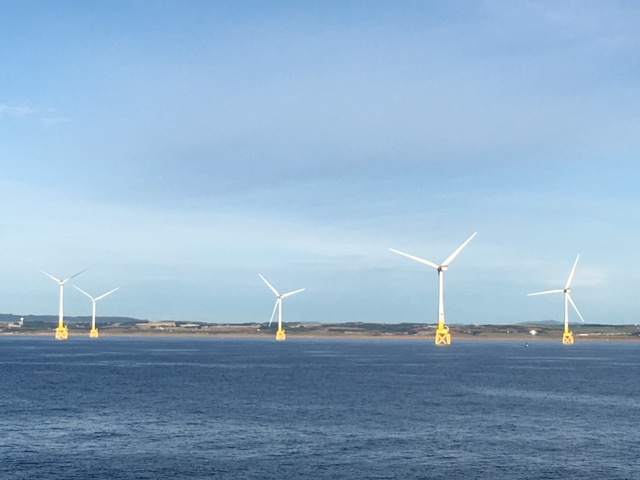Changing the tide
The outgoing Chair of the Policy Committee, Dr Juliet Vickery, reflects on how to meet the twin climate and biodiversity crises.

Last Sunday I was lucky enough to be sitting on the summit of the Old Man of Coniston in the Lake District, under a clear blue winter sky and with a 360-degree view across The Lakes and the Irish Sea. Morecombe Bay stretched out to the south where its offshore army of wind turbines whirred, disembodied, above the ribbon of dense white cloud sitting above the estuary. It was an evocative sight given the week ahead would see the COP 25 UN climate talks in Madrid and World Wildlife Day this year focussed on marine environments – a clear reminder of the need for ‘collaborative solutions’ to the twin challenges of biodiversity and climate crises we face.
The theme of World Wildlife Day in March was “Life below water: for people and planet”, aligning with UN Sustainable Development Goal 14 To “Conserve and sustainably use the oceans, seas and marine resources for sustainable development”. This year, perhaps more than ever before, we are all too aware of the fragility of that world and the extent to which it is threatened by our actions. These turbines, turning and harnessing the energy of the wind, are certainly a force for good in tackling climate change but they are, of course not without risks to the marine environment.

The Intergovernmental Panel on Climate Change’s (IPCC’s) call to reach net zero emissions by 2050 will require a huge shift away from fossil-fuels to renewable energy including from large-scale renewable energy infrastructure such as offshore wind. The Committee on Climate Change’s (CCC) pathway to net zero suggests 75GW of offshore wind will need to be deployed, equating to almost nine times the current level of operating offshore wind farms in the UK. However, The Intergovernmental Science-Policy Platform on Biodiversity and Ecosystem Services has estimated that only 3% of the world’s oceans remain free from human influence and it is increasingly apparent that offshore wind can have serious impacts on the marine environment.
A recent paper in Science1 highlighted the interdisciplinary collaboration needed to overcome three ‘grand challenges in science and engineering’ for wind energy. But an important and significant omission, a fourth grand challenge, is to ensure offshore wind deployment is in harmony with nature2.
Ensuring that net zero is delivered without undermining the natural environment will depend on close collaboration across different sectors including Government, public bodies, industry and conservation.
Real or perceived wildlife impacts from wind farms, can cause public resistance towards projects, resulting in delays and loss of political support. A proactive approach to biodiversity issues can save time, money and boost public perception of the wind industry. This will require more and better research and monitoring to identify the most important places for sealife and understand how development impacts on nature, more strategic planning at single and multiple windfarm level and investment in conservation measures to protect marine species and habitats and improve their resilience and long-term future. Interdisciplinary planning and designing will improve our ability to deploy wind energy rapidly, safely and in a way aligned with both climate mitigation and biodiversity conservation goals.
1 Veers et al 2019 Grand challenges in the science of wind energy. Science 25 Oct 2019: Vol. 366, Issue 6464, e DOI: 10.1126/science.aau2027 https://science.sciencemag.org/content/366/6464/eaau2027
2 Gauld et al 2019 The fourth grand challenge in the science of wind energy: minimizing biodiversity impacts. Response to Veers et al 2019 https://science.sciencemag.org/content/366/6464/eaau2027/tab-e-letters
Like what we stand for?
Support our mission and help develop the next generation of ecologists by donating to the British Ecological Society.